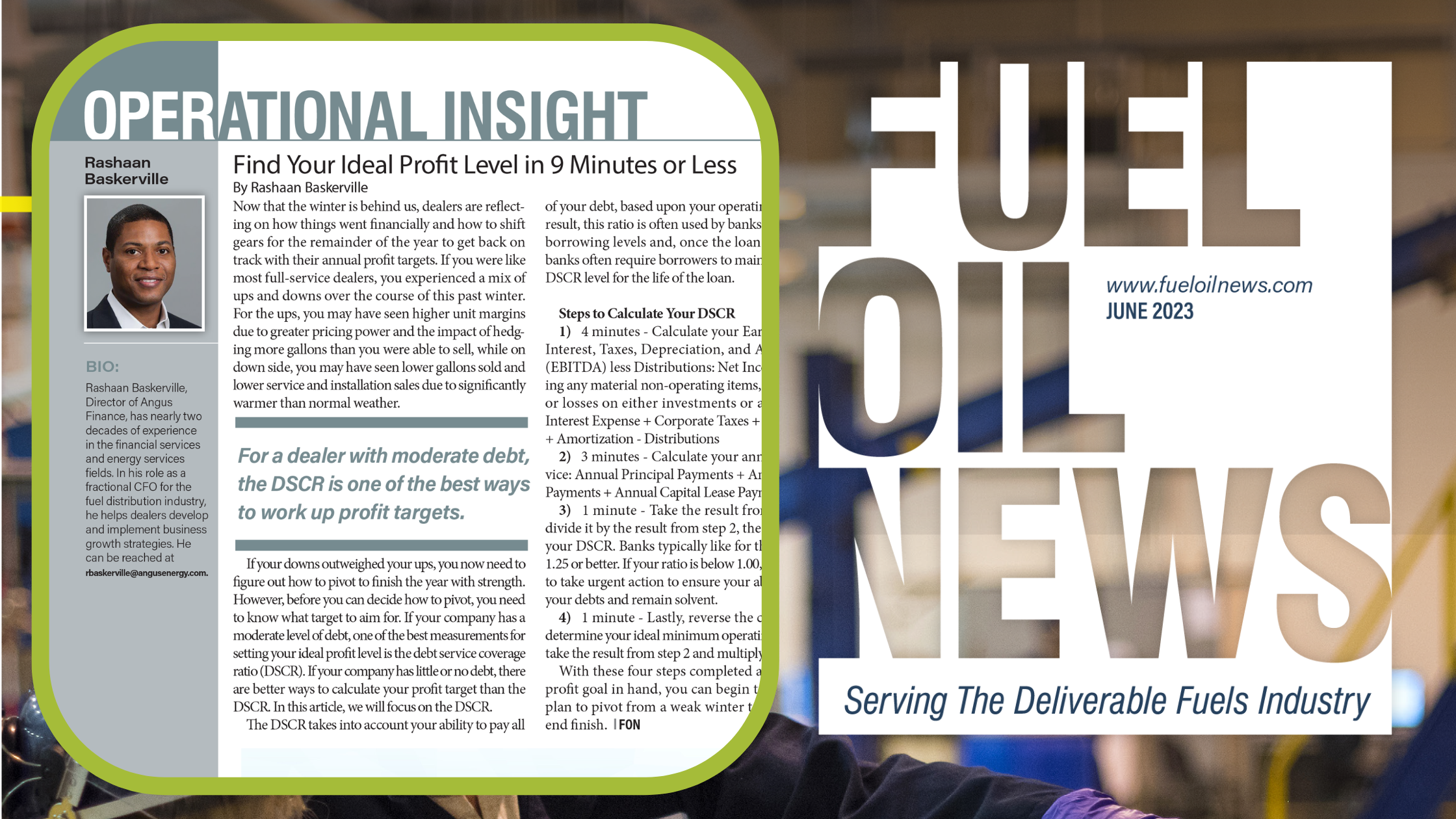Now that the winter is behind us, dealers are reflecting on how things went financially and how to shift gears for the remainder of the year to get back on track with their annual profit targets. If you were like most full-service dealers, you experienced a mix of ups and downs over the course of this past winter. For the ups, you may have seen higher unit margins due to greater pricing power and the impact of hedging more gallons than you were able to sell, while on down side, you may have seen lower gallons sold and lower service and installation sales due to significantly warmer than normal weather.
If your downs outweighed your ups, you now need to figure out how to pivot to finish the year with strength. However, before you can decide how to pivot, you need to know what target to aim for. If your company has a moderate level of debt, one of the best measurements for setting your ideal profit level is the debt service coverage ratio (DSCR). If your company has little or no debt, there are better ways to calculate your profit target than the DSCR. In this article, we will focus on the DSCR.
The DSCR takes into account your ability to pay all of your debt, based upon your operating profit. As a result, this ratio is often used by banks to determine borrowing levels and, once the loan is approved, banks often require borrowers to maintain a certain DSCR level for the life of the loan.
Steps to Calculate Your DSCR
- 4 minutes – Calculate your Earnings Before Interest, Taxes, Depreciation, and Amortization (EBITDA) less Distributions: Net Income (excluding any material non-operating items, such as gains or losses on either investments or asset sales) + Interest Expense + Corporate Taxes + Depreciation + Amortization – Distributions
- 3 minutes – Calculate your annual debt ser- vice: Annual Principal Payments + Annual Interest Payments + Annual Capital Lease Payments
- 1 minute – Take the result from step 1 and divide it by the result from step 2, the result will be your DSCR. Banks typically like for this ratio to be 1.25 or better. If your ratio is below 1.00, you will want to take urgent action to ensure your ability to cover your debts and remain solvent.
- 1 minute – Lastly, reverse the calculation to determine your ideal minimum operating profit level: take the result from step 2 and multiply it by 1.25
With these four steps completed and your new profit goal in hand, you can begin to create your plan to pivot from a weak winter to a solid year- end finish.
This article was written by Rashaan Baskerville and was originally published in the June Issue of Fuel Oil News.

